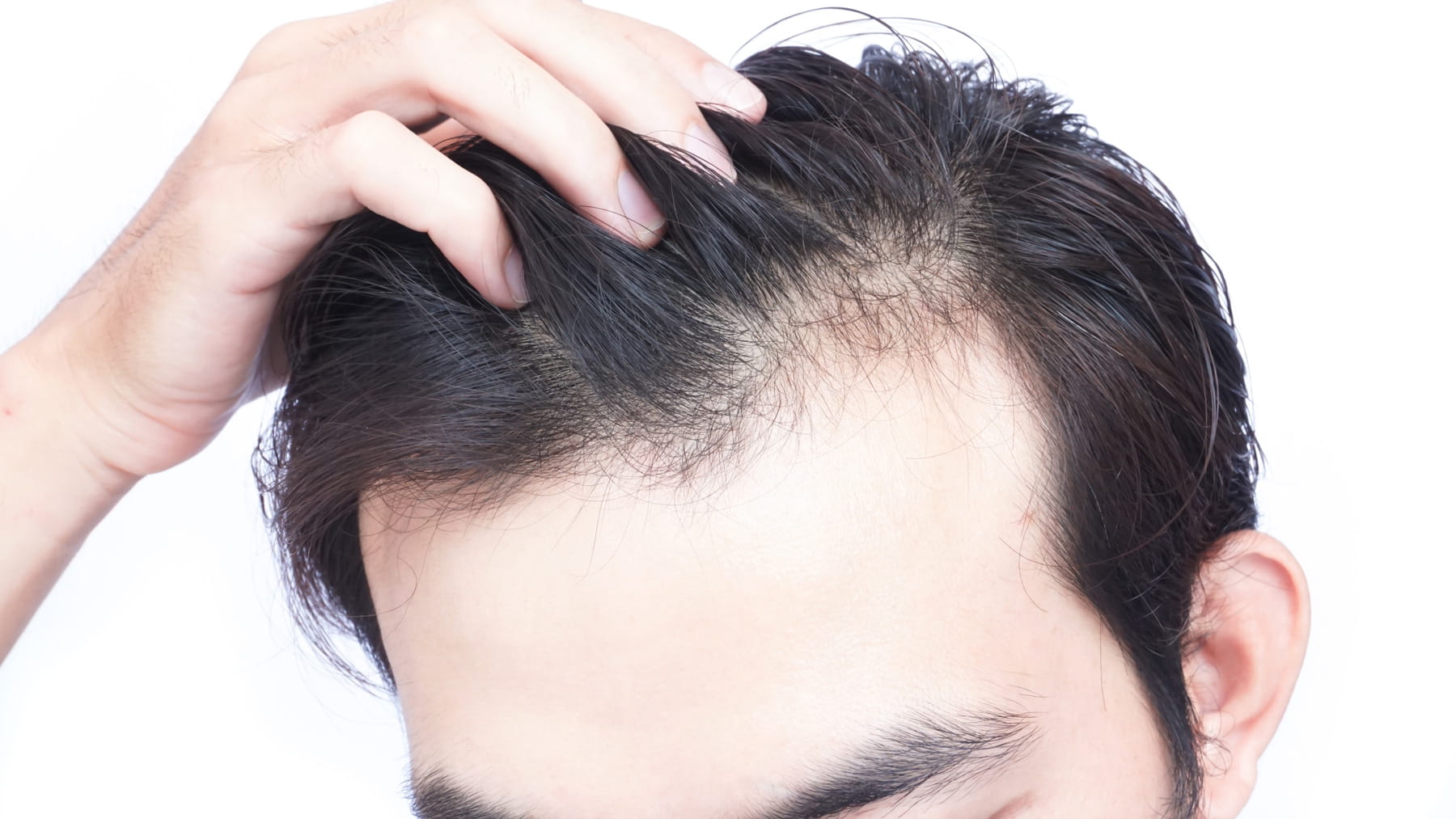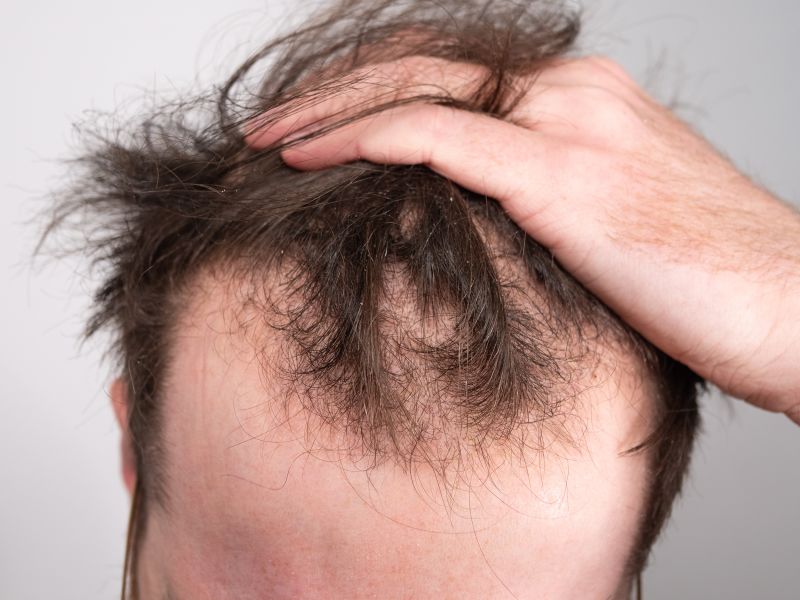Hair loss can be a daunting and overwhelming experience, especially if one is unsure of the cause. Its important to understand why its happening in order to address it properly. In this article, well explore the root of the problem: understanding hair loss causes and what steps you can take to combat them.
From hormone imbalances to nutritional deficiencies, there are many factors that contribute to thinning or balding hair. Well look at each one in detail so you can make an informed decision about how best to manage your own situation.
Additionally, we will examine some potential hair loss treatments that could help restore your locks back into their former glory! So lets dive in and unravel the mystery behind hair loss causes today!
Causes of Hair Loss

Hair loss is a common problem that affects people of all ages and genders. Many factors can lead to hair loss, including genetics, medical conditions, environmental factors, and lifestyle choices such as diet or stress levels. Understanding the root cause of hair loss can help treat it more effectively.
Genetics plays an important role in determining whether someone will experience hair loss. Hair follicles contain genetic information that determines their growth cycle – when the genes are “turned off” due to inherited traits or mutations, this can contribute to pattern baldness which leads to thinning or complete baldness over time.
Medical conditions like thyroid disease, iron deficiency anemia, diabetes and lupus can also lead to hair loss by interfering with healthy cell function in the scalp or creating hormone imbalances that affect normal growth cycles. Additionally, some medications used for certain conditions may have side effects on the scalp leading to temporary shedding of strands from the head.
Environmental factors such as extreme temperatures (high heat), exposure to ultraviolet light (sunlight) and chemical contact (i.e., shampooing too often) can also disrupt normal hair follicle functioning resulting in damage over time; this type of damage typically presents itself through breakage rather than full-blown pattern baldness but still causes significant amount of shedding if not addressed properly early on.
Finally lifestyle choices such as ones diet and stress level should not be overlooked either since both directly affect our bodies natural processes; inadequate nutrition coupled with high levels of stress hormones like cortisol interferes with healthy cell function while simultaneously causing inflammation which weakens roots further contributing towards excessive shedding/hair fall overtime if left unmanaged for long periods at a stretch
Types of Hair Loss

Hair loss is a common problem that can affect people of all ages. While there are many causes of hair loss, it’s important to understand the different types in order to properly diagnose and treat the condition. The most common types of hair loss include:
- Androgenetic Alopecia – Also known as male- or female-pattern baldness, this type of hair loss occurs when hormones cause follicles to shrink and produce thinner hairs over time. This form can be treated with medications such as finasteride or minoxidil.
- Telogen Effluvium – Caused by physical or psychological stressors, like surgery, childbirth, extreme dieting or medications, telogen effluvium results in sudden thinning from all over the scalp due to increased shedding at the beginning of the resting phase (telogen). In certain cases, this type of hair loss may be reversed if its underlying cause is identified and treated.
- Alopecia Areata – An autoimmune disorder which causes patchy areas on the scalp where no hairs grow at all; alopecia areata typically affects young adults but can occur at any age. It tends to come and go unpredictably with treatments ranging from topical corticosteroids to immunotherapy injections available depending on severity.
- Trichotillomania – Often referred to as ‘hair pulling disorder’; trichotillomania is characterized by compulsive pulling out of ones own body hairs for non-cosmetic reasons resulting in patches or clumps on various parts of head/body including eyebrows and eyelashes along with scalp hairs being affected rarely too! Treatment involves psychotherapy techniques coupled with behavioral therapy strategies such as habit reversal training often recommended alongside pharmacological interventions like SSRIs (selective serotonin reuptake inhibitors).
Risk Factors for Hair Loss

Hair loss is a common problem for many people, so understanding the risk factors that contribute to it can be beneficial. Genetics is often cited as a major factor in hair loss, with male pattern baldness and female pattern hair loss both being primarily hereditary conditions.
However, other lifestyle factors can also play a role in causing hair loss or exacerbating existing conditions. Stress is one of the most commonly cited contributing factors; periods of prolonged stress can cause telogen effluvium, while chronic anxiety may lead to alopecia areata.
Improper dieting or nutrition deficiencies – such as anemia due to iron deficiency – could also lead to thinning hair or patches of baldness if not addressed quickly enough.
Finally, certain medications and treatments may have side effects that include temporary or permanent hair loss; those taking blood thinners should take extra precautions when considering any type of surgery involving their scalp area.
Conclusion

In conclusion, it is clear that the causes for hair loss are numerous and varied. Hair loss can be caused by genetics, disease, stress or even a side-effect of certain medications. It is important to understand all of the potential root causes in order to identify which treatments will work best.
Though there is not yet a cure for hair loss, knowledge about its causes can help develop more effective remedies in the future.
Additionally, taking proactive steps such as eating a healthy diet and managing stress levels may help slow down or prevent further balding or thinning. With the right information, everyone has an opportunity to take control of their own hair health and growth journey.







